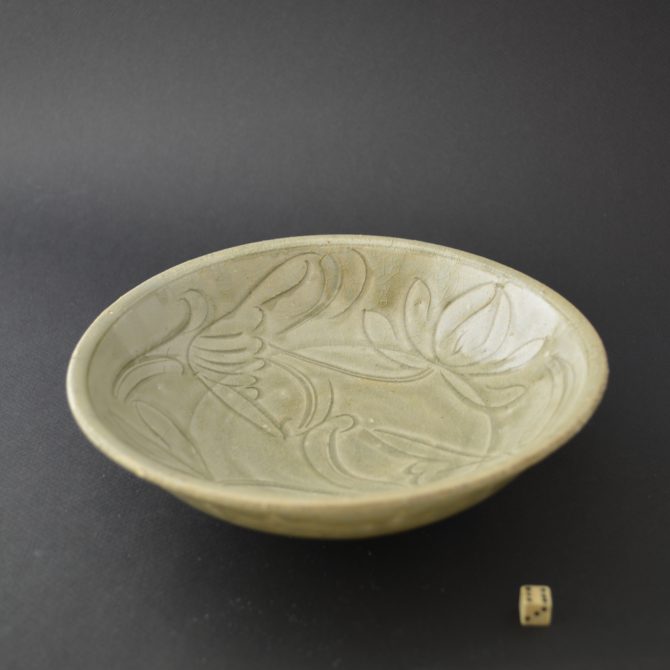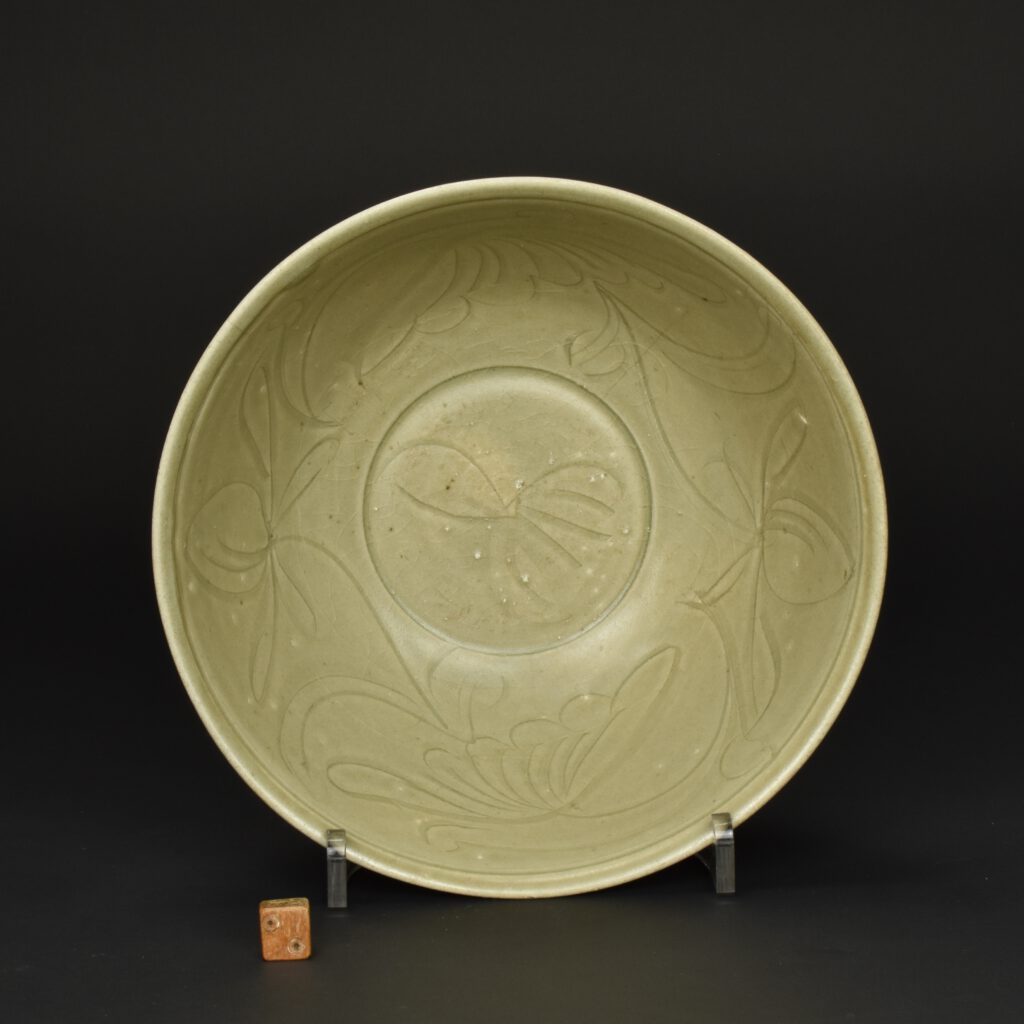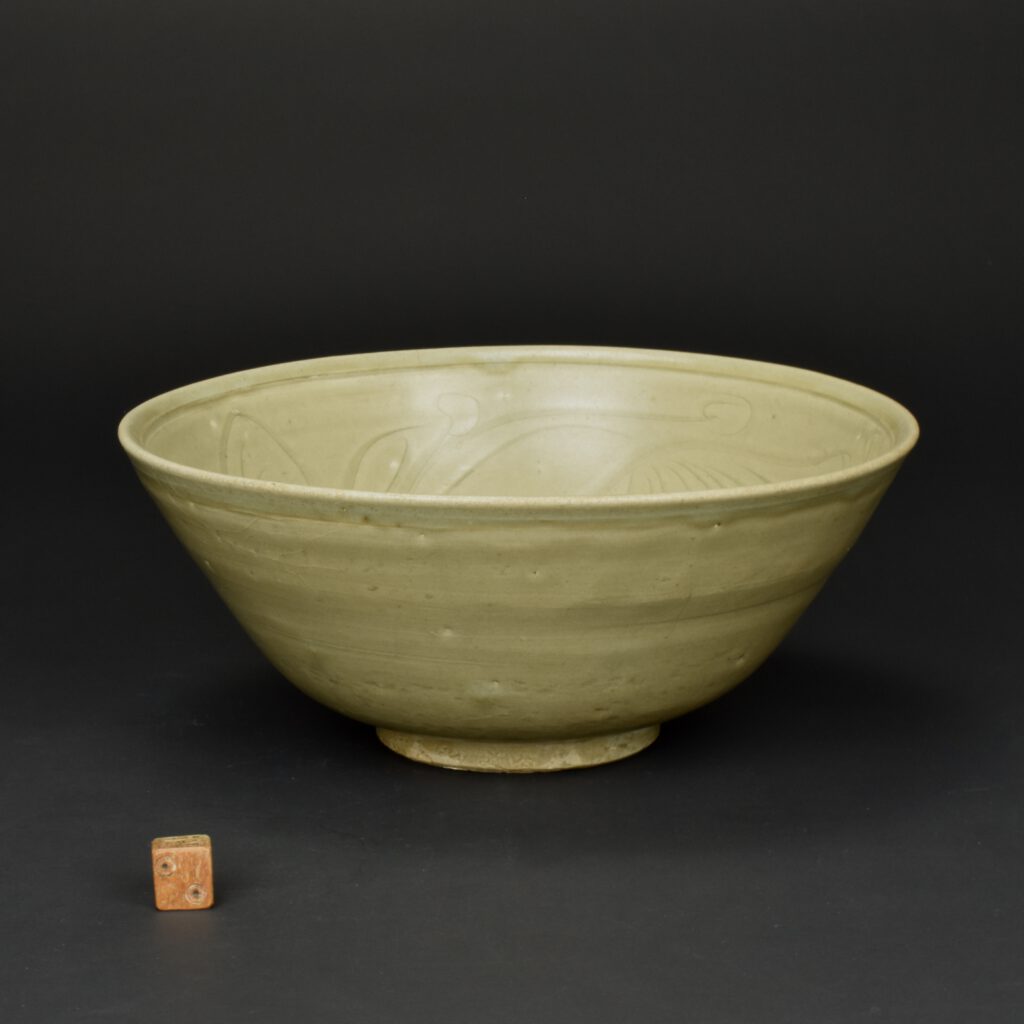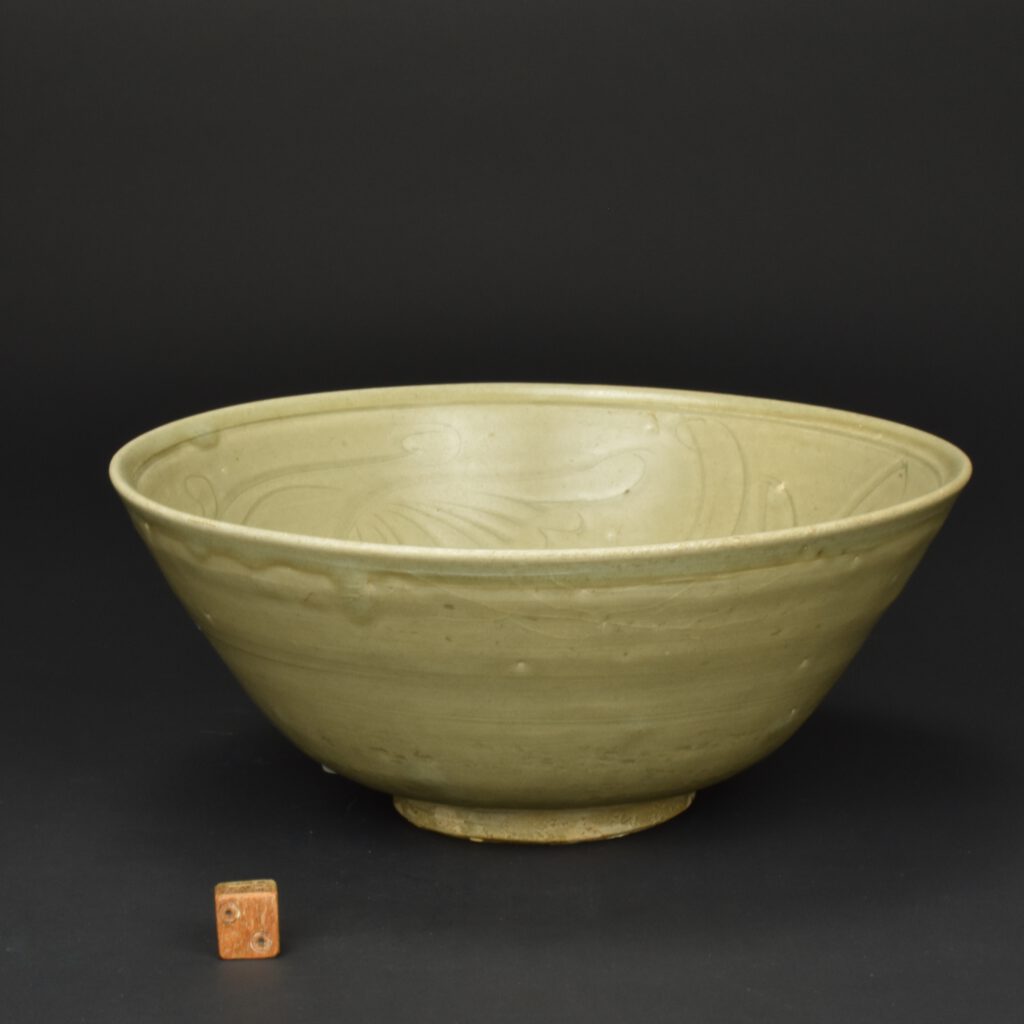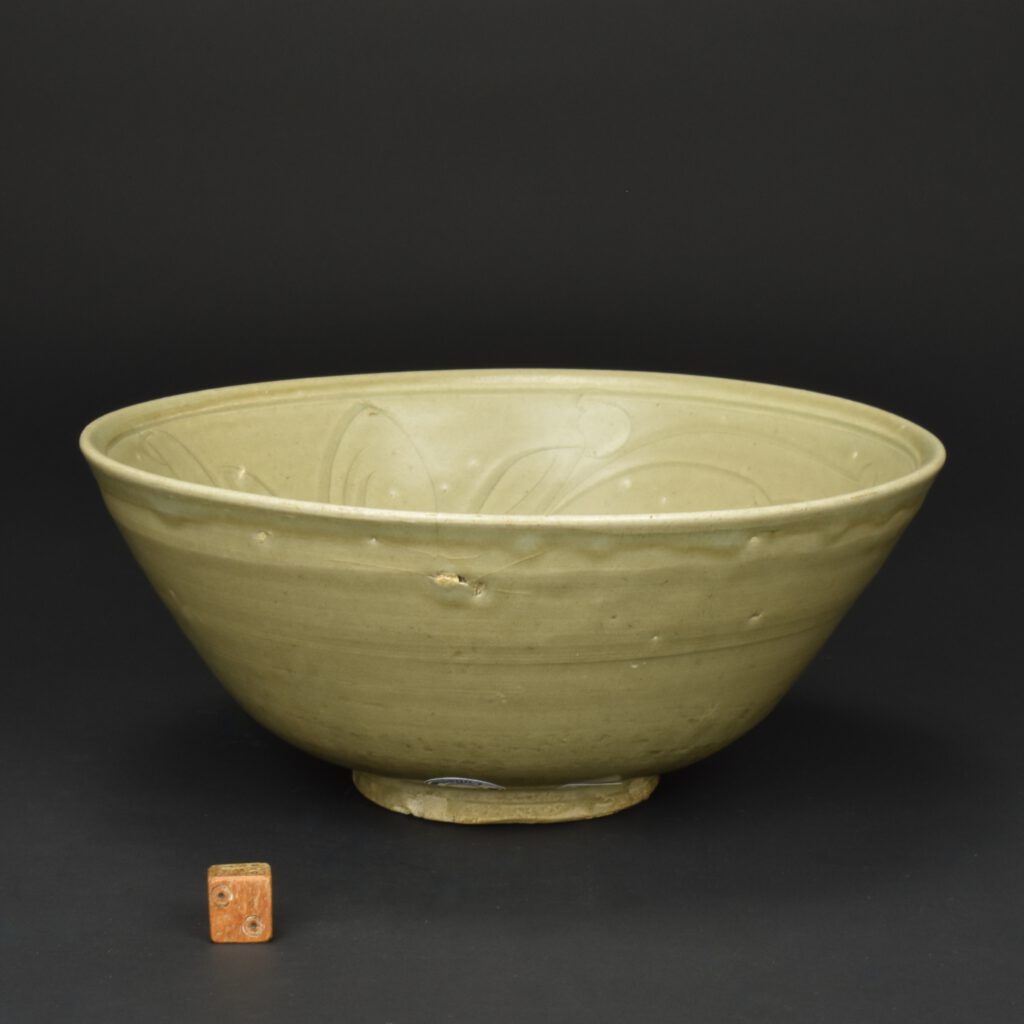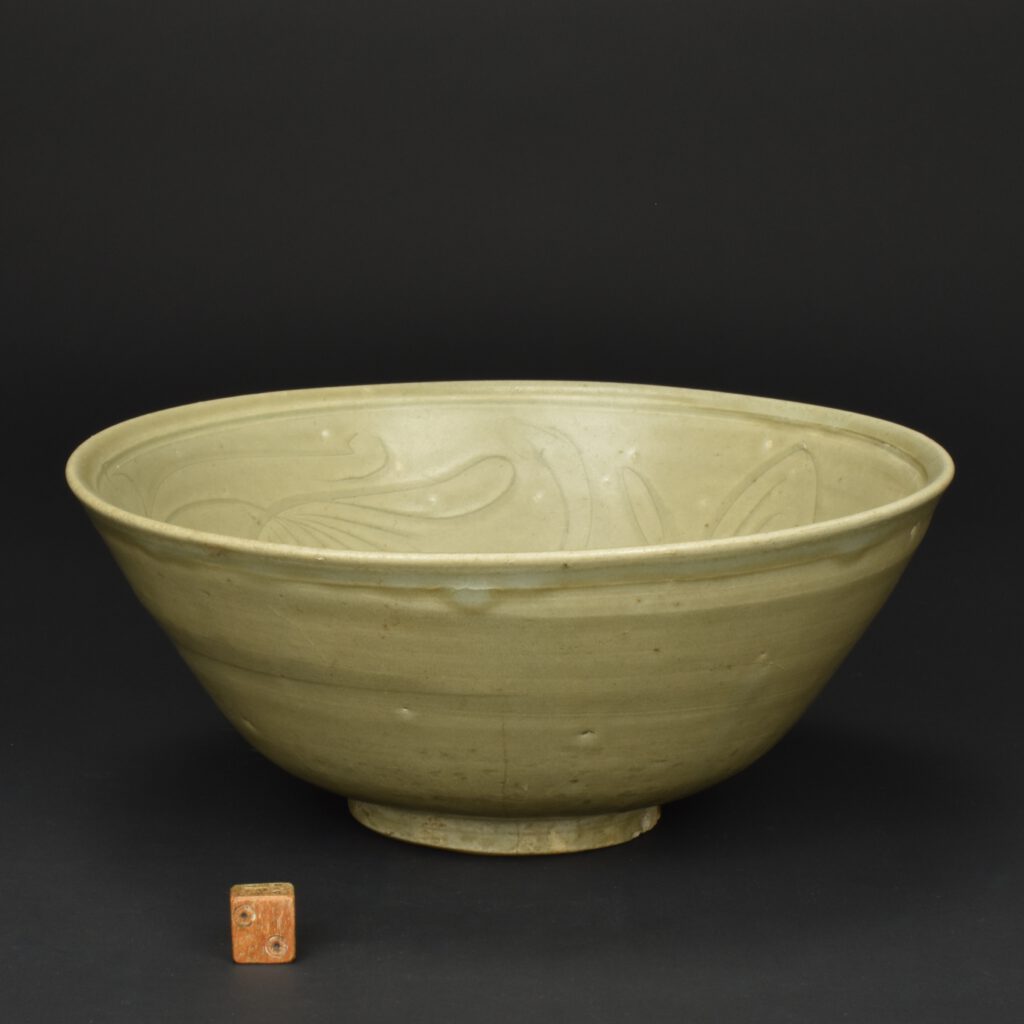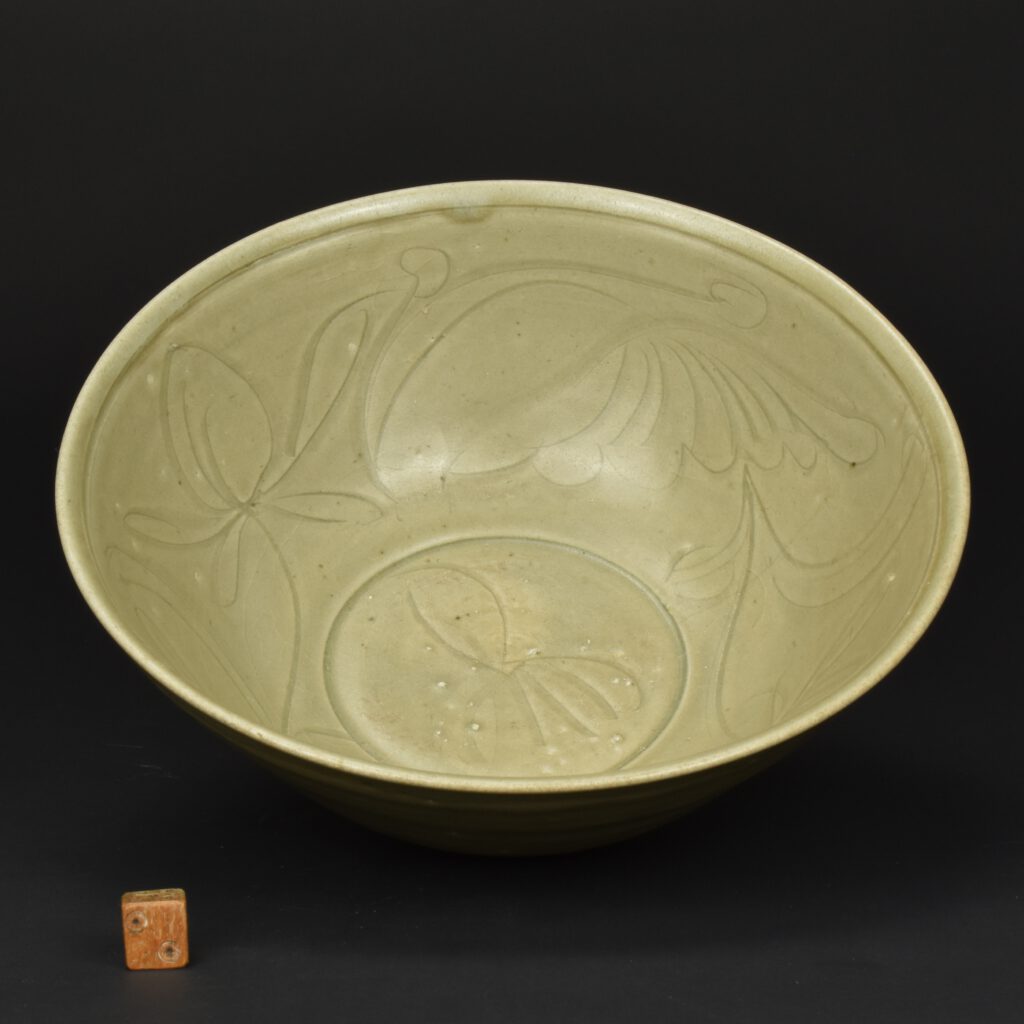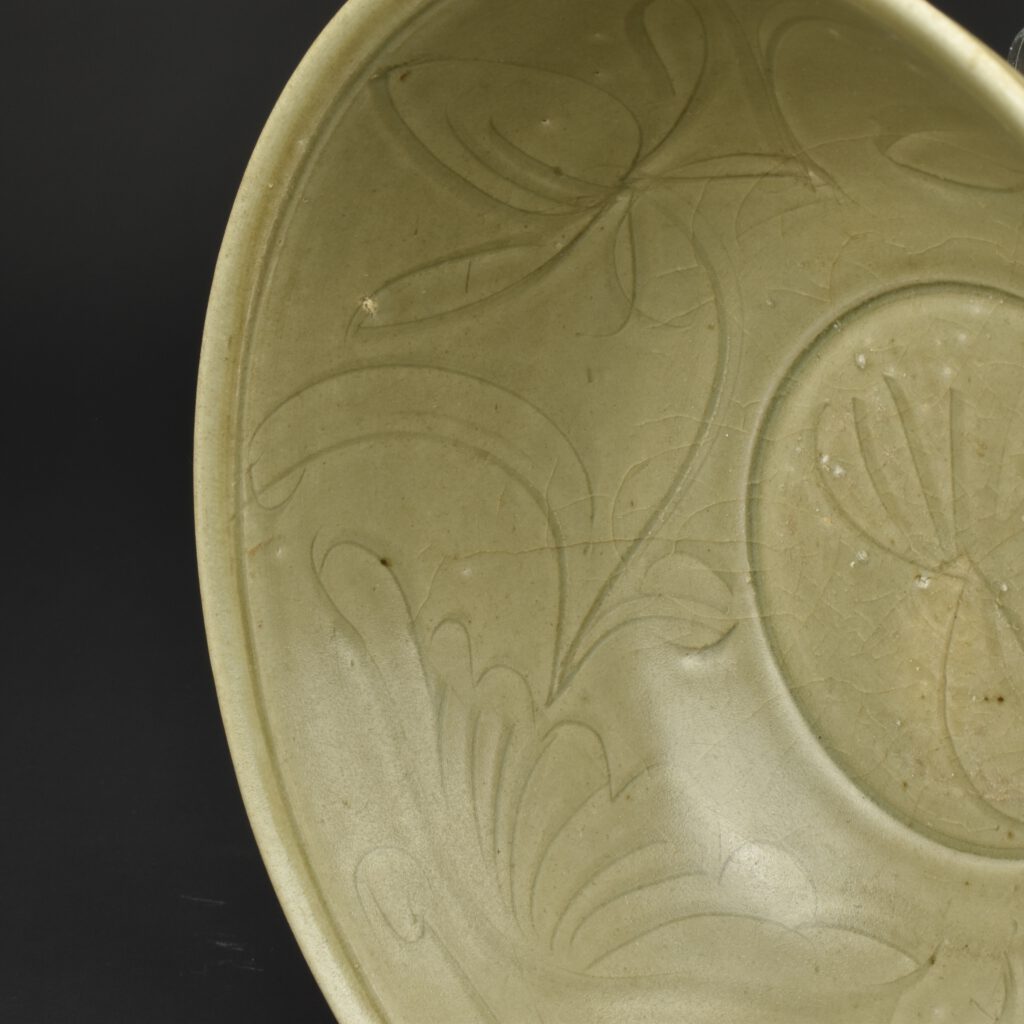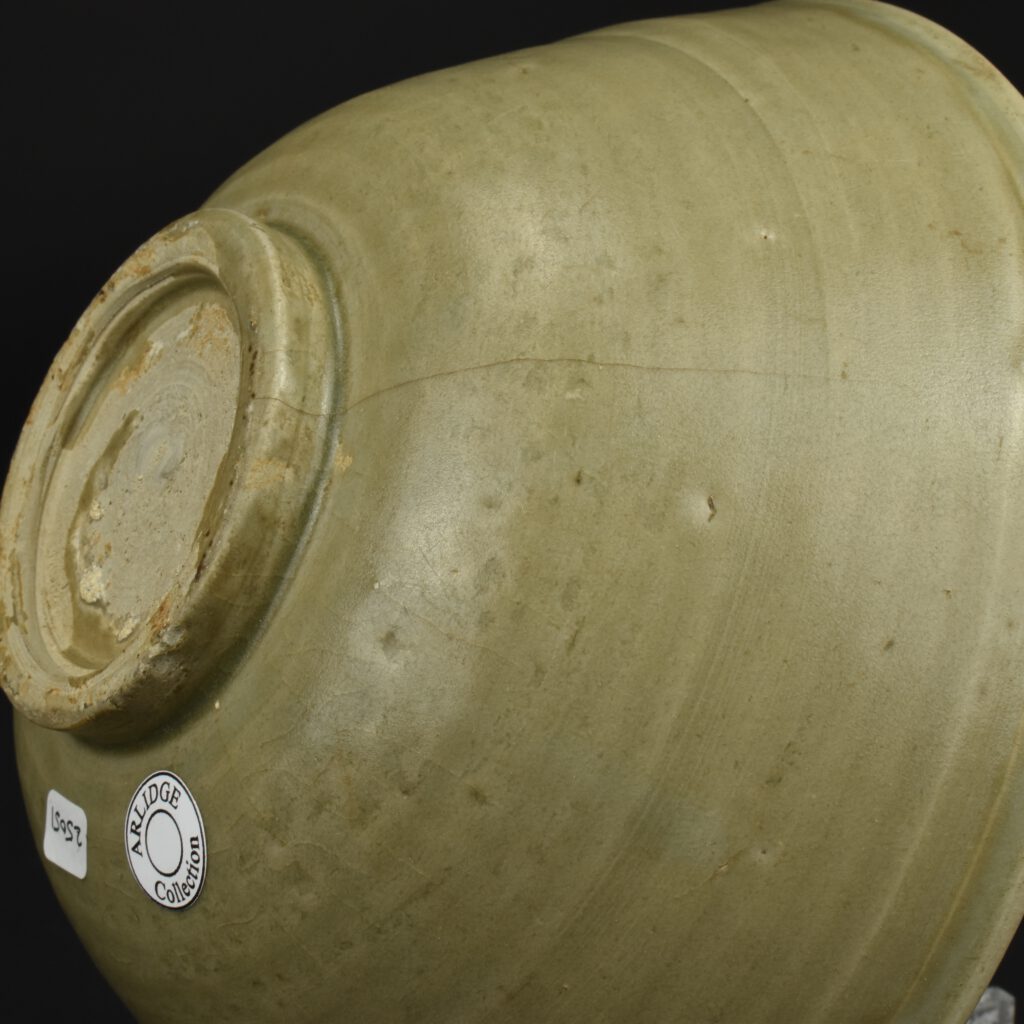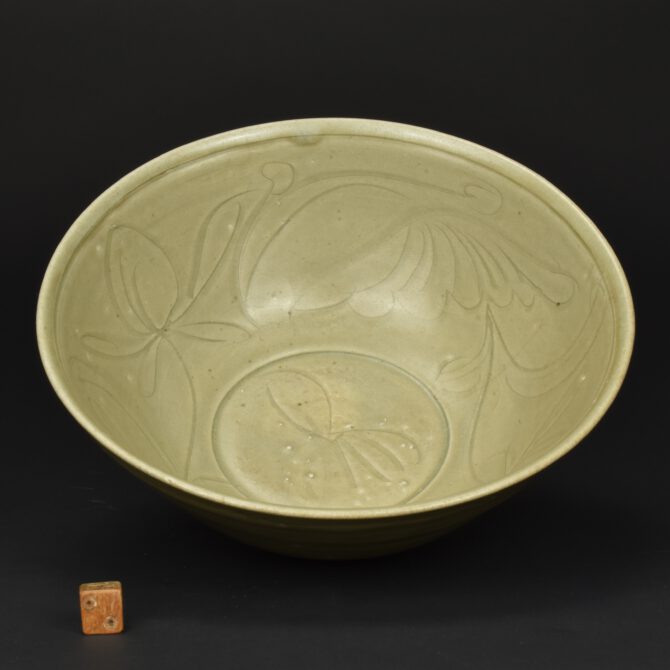
A Song Celadon Carved Bowl
A Song Dynasty Celadon Bowl, from a Kiln in Fujian Province, perhaps the Minnan kilns, Song Dynasty 12th Century. Very likely from the 12th century shipwreck called The Jepara Wreck (see below). The decoration of this Celadon bowl consists of vigorously carved lotus. Two Celadon bowls of this type, attributed to the Anqi kilns in Fujian are illustrated in Chinese Celadons and other related Wares in South East Asia (Compiled by the Southeast Asian Ceramic Society Singapore. Arts Orientalis Singapore 1979) see References.
See Below For More Photographs and Information.
SOLD
- Condition
- There is a large crack which is less visible from the front (see last two photographs). A small rim crack, some crazing, very minor scratches.
- Size
- Diameter 18.5 cm (7 1/4 inches)
- Provenance
- The Peter Arlidge Collection of Song Ceramics. These ceramics were collected during a 50-year career in transport investment. Peter, who describes himself as an ‘old-fashioned collector’, comes from a long line of potters and was the first son not to take up the family profession. Instead, he had a career in transport investment that made him resident in countries such as Malaysia, Vietnam and Indonesia where his love affair with ceramics developed. During Peter’s time in Malaysia in the 1960s his interest in Chinese ceramics peaked and when he later moved to Indonesia, he bought the first two pieces for what would become a much prized personal collection.
- Stock number
- 25051
- References
- See below for a photograph. A Song Celadon Ware bowl, Fujian Province, c.12th century. Probably from the Jepara Shipwreck. The shallow celadon ware bowl is fluidly carved with flowering lotus. This carving style is mirrored in the Qingbai porcelain from the same wreck. R and G McPherson Antiques. Nicholas de la Mare Thompson (1928-2010). Robert McPherson Antiques Sold Archive - 24889. Two Celadon bowls of this type, attributed to the Anqi kilns in Fujian are illustrated in Chinese Celadons and other related Wares in South East Asia (Compiled by the Southeast Asian Ceramic Society Singapore. Arts Orientalis Singapore 1979) page 136, items 53 and 54.
Information
Chinese Celadon Ware
Celadon is a term used to describe several types of Chinese stoneware and porcelain, as well a ceramics from other countries, notably from Korea and Japan. The term is a imprecise one, applying to various types of green glazed ceramics, but not all ceramics with green glazes, there are several wares that have a green glaze that are not refereed to as celadon. For example Green Jun and Ge Ware. For this reason there has been a move to try to clarify the situation by using the term ‘Green Ware’. But for now Celadon is a more familiar and therefore useful term. The origins of the term Celadon are not clear, one theory is that the term first appeared in France in the 17th century and that it is named after the shepherd Celadon in Honoré d’Urfé’s French pastoral romance, L’Astrée (1627), who wore pale green ribbons. (D’Urfe, in turn, borrowed his character from Ovid’s Metamorphoses.) Another theory is that the term is a corruption of the name of Saladin, the Ayyubid Sultan, who in 1171 sent forty pieces of the ceramic to Nur ad-Din, Sultan of Syria. Yet a third theory is that the word derives from the Sanskrit sila and dhara, which mean “stone” and “green” respectively.
Celadon ware originated in Zhejiang Province in the Eastern Han Dynasty, however green monochrome glazes can be found on stoneware much before that date. Zhejiang is were the famous Longquan Celadons were made but Celadon wares were also produced at Jiangsu, Hubei, Hunan and Jiangxi. The production of Celadon Ware required a reducing atmosphere of around 1300 degrees C., the colouring agent was a mixture of iron oxide and titanium. The glaze was applied very thickly, and was full of tiny bubbles which defuse the light giving the appearance of richness and softness.
The Peter Arlidge Collection of Song Ceramics
These were collected during a 50-year career in transport investment. Peter, who describes himself as an ‘old-fashioned collector’, comes from a long line of potters and was the first son not to take up the family profession. Instead, he had a career in transport investment that made him resident in countries such as Malaysia, Vietnam and Indonesia where his love affair with ceramics developed. During Peter’s time in Malaysia in the 1960s his interest in Chinese ceramics peaked and when he later moved to Indonesia, he bought the first two pieces for what would become a much prized personal collection.
The Jepara Shipwreck
The Jepara Wreck contained numerous coins, the latest was struck during the reign of Jian Yian datatable to no later than A.D 1130. Chinese coins were in circulation for many years and looking at the ceramics they certainly appear to be later. We had a large group of pieces from this wreck which we incorrectly dated to the Yuan Dynasty (1279-1368) but I now feel the recovered ceramics date from the mid to late 12th century. However it might turn out that these pieces date from nearer 1130 than I now think. The ceramics recovered were rather basic, utilitarian pieces but not without a certain rustic charm. Most of the ceramics were either celadon wares of Tongan and Minnan, and Qingbai ware both of which appear to originate from Fujian Kilns. Celadon fragments found at the Putian and Lianjiang Pukou kiln match celadon bowls from the Jepara wreck. http://www.koh-antique.com/fujianceramics/fceramicsmain.html
